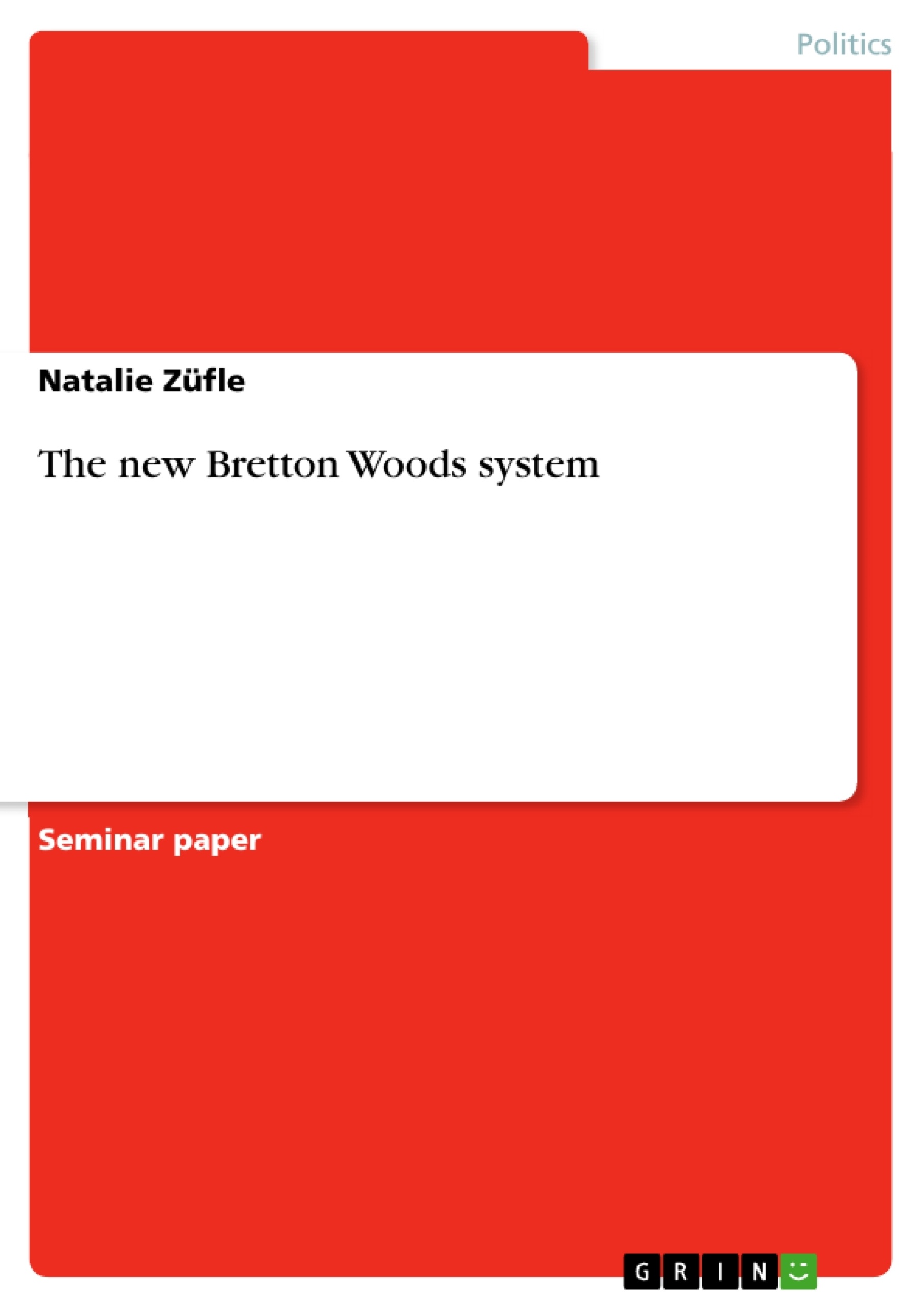Barry Eichengreen and Michael Dooley understand the current international monetary and financial system as “new Bretton Woods System.” Global imbalances such as the expanding US current account deficit in combination with a stable US Dollar exchange rate imply that Asia central banks are storing large amounts of US dollars in their international reserve portfolios. It follows a comparison of the new system with the old Bretton Woods framework relating the findings to arising potential for international political conflicts.
Task: Barry Eichengreen and Michael Dooley understand the current international monetary and financial system as “new Bretton Woods System.” Global imbalances such as the expanding US current account deficit in combination with a stable US Dollar exchange rate imply that Asia central banks are storing large amounts of US dollars in their international reserve portfolios. In reaction, the US senate announced to introduce the so called China Currency Bill. (See United States Senate press release at: http://finance.senate.gov/press/Gpress/2005/prg092806.pdf. Please compare the new system with the old Bretton Woods framework and relate your findings to arising potential for international political conflicts.
After the lessons learned from the Great Depression 44 (primarily European) member states decided at the Conference of Bretton Woods to set up rules and institutions to regulate and stabilize the international monetary system (see also BpB 2008). A fixed exchange rate regime with gold as anchor was established and the US central bank committed to exchange dollar for gold at a fixed price at any time. The other countries pegged their currencies to the dollar, which turned the USA into a reserve country. Due to increasing international trade the USA ran a growing current account deficit. In the late 1960s the dollar experienced considerable inflation pressure because of the Fed’s economy stabilization efforts. Confidence diminished, the key currency’s inflation was “imported” by other countries. Finally, the exuberant global money supply let the Bretton Woods system collapse, when the USA suspended their commitment to convert dollar into gold.
Nowadays, we can discover a quite similar financial system of fixed exchange rates, which is analogically described as Bretton Woods II by various scholars. But these days it is particularly Asian emerging markets (China until 2005 – Remsperger 2006, p. 12), that (partly informally) peg their currencies – this time to the dollar as anchor (Eichengreen 2004b, p. 2). And like the Europeans in the 1950s and 1960s, they keep their currencies low and undervalued by accumulating large amounts of US dollar reserves, and thus continue to run their export-oriented economies competitive (Eichengreen 2004a, p. 42).
In the meantime, the USA shows a remarkable current account deficit of more than 850 billion USD or almost 7 % of GDP in 2006 (Bergsten 2007), as the country once again lives “beyond its means” (Eichengreen 2004b, p. 2). And once again, the dollar seems to be quite stable, like in the early days of Bretton Woods. But this time the issuance of additional dollar-denominated securities bought by Asian central banks results in less dollar appreciation and less imported inflation than formerly, which in turn means less pressure on the Fed to raise interest rates (see Eichengreen 2004a, p. 42, 2004b, p. 4).
[...]
- Citar trabajo
- Natalie Züfle (Autor), 2008, The new Bretton Woods system, Múnich, GRIN Verlag, https://www.grin.com/document/180110




